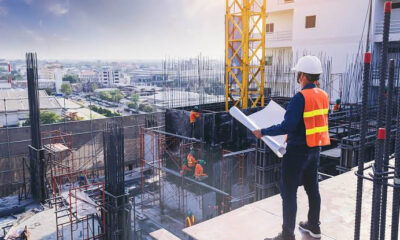Experts' Take
Reoriented realty for revival


As we leave behind a difficult year, there is a cautious optimism for real estate turnaround in the New Year as the reformed realty heads towards consolidation. What does it mean for real estate in terms of its reorientation? There are some who feel a rough road ahead in the wake of RERA tightening its regulatory grip over property developers.
Shanti Lala Kataria, President of Credai Maharashtra, has gone on record to say that going forward the new regulatory landscape poses a major survival threat to small players. In the long run, it is becoming difficult for small and unorganised developers to survive due to stringent RERA rules.
In fact, throughout 2018, debt-ridden developers, especially the smaller ones, have been feeling the liquidity pinch, accentuated by RERA which locks 70 per cent of total customer payments in an escrow account. Besides, towards Q3 of current fiscal, the ongoing crisis of NBFCs (a major source of funding for developers in view of highly restrictive bank funding) further hit the liquidity hard. Though the Government is taking pro-active measures to ease liquidity of banks and NBFCs, it will take a couple of more quarters for the situation to normalise. As such compared to bigger established players who have greater access to bank, PE or NBFC funding, smaller, especially unorganised players will continue to be at a disadvantage.
The previous year could not totally neutralise the short-term disruptive impact of key reforms of RERA & GST. RERA was expected to provide relief to aggrieved homebuyers by way of speedy project completions and delivery and ensuring refund to buyers of stalled housing projects. But this relief did not come through due to lack of some sound project completion mechanism and slow complaint redressal by RERA Authority which in many states did not become fully functional. The GST, besides felicitating ease of doing business, was meant to bring down tax burden. But a high GST of 12 per cent on under-construction housing projects (compared to less than 6 per cent tax in pre-GST regime) had a negative impact on home sales pick-up, particularly as the flawed implementation of Input Credit Tax, defeated the real purpose. As such the reformed and reoriented realty was not of much use in reviving battered real estate.
Throughout 2018, debt-ridden developers, especially the smaller ones, have been feeling the liquidity pinch, accentuated by RERA which locks 70 per cent of total customer payments in an escrow account.Though the Government is taking pro-active measures to ease liquidity of banks and NBFCs, it will take a couple of more quarters for the situation to normalise.A high GST of 12 per cent on under-construction housing projects (compared to less than 6 per cent tax in pre-GST regime) had a negative impact on home sales pick-up.
This year, as RERA gathers further momentum and becomes fully operational, it should bring substantial relief, especially with PSUs like NBCC undertaking stalled projects for speedy completion.
The upcoming general elections creating an atmosphere of political uncertainty, the first half of the year may not see optimum positive impact of reforms as global investors will be adopting cautious stance.
But this year, as RERA gathers further momentum and becomes fully operational, it should bring substantial relief, especially with PSUs like NBCC undertaking stalled projects for speedy completion. Moreover, with the Government restricting the benefit of 0 per cent GST only to projects with completion certificate should see developers focusing on project completions. Last year, affordable housing, supported by mid- segment, enjoying substantial interest subsidy paid rich dividends by pushing sales. Now, the New Year should see mid-segment housing greater traction with the Government extending interest subsidy till March 2020.
As with sales pick-up, home prices are already showing signs of upward movement (with NHB Residex recording price rise of up to 22 per cent in 33 cities during April-June quarter of FY’19). Going forward, with expected fall in transaction cost and RERA boosting buyer confidence, one should see prices further firming up. And this should see investors who were staying away, to come back to the market, thereby aiding the recovery of residential real estate. But then the upcoming general elections creating an atmosphere of political uncertainty, the first half of the year may not see the optimum positive impact of reforms as the global investors will be adopting cautious stance and it will be only in the latter half of the new year that reformed and reoriented realty will be on road to sustainable revival.
(The writer is Founder & Editor of Ground Real(i)ty Media, a real estate content service)
-



 News4 weeks ago
News4 weeks agoKW Delhi 6 Mall Onboards New Brands
-



 News4 weeks ago
News4 weeks agoManasum Senior Living Launches IKIGAI GOA, A Senior Living Community in North Goa, in collaboration with Prescon Homes
-



 News4 weeks ago
News4 weeks agoBridging India Divide: Top 5 Tier- 2 Cities to Focus On
-



 News4 weeks ago
News4 weeks agoCommercial Realty Gets Tech Savvy: Fast Construction, Enhanced Convenience
-



 News3 weeks ago
News3 weeks agoGodrej Properties Sells Rs 3k cr+ Homes of Godrej Zenith, Gurugram, within 3 days
-



 News4 weeks ago
News4 weeks agoMultipoint Connection – A Definite Boon
-



 News3 weeks ago
News3 weeks agoRBI’s Status Quo on Key Policy Rates to Help Maintain the Real Estate Growth Momentum, Say Industry Stalwarts
-



 News2 weeks ago
News2 weeks agoOlive Announces Dhruv Kalro as Co-Founder
















